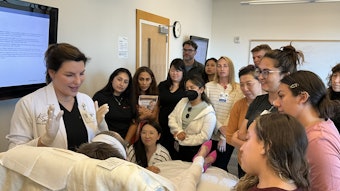
Although the medical aesthetics industry experienced a significant growth post-pandemic, a BCG analysis[1] shows the industry can grow at a faster pace by putting the consumer first and focusing on customer service, as revenue and operating expenses grow disproportionately. Fluctuating demand and evolving patient expectations highlights a necessary focus on revenue optimization strategies that ensure sustainable growth in 2025.
By implementing tactical adjustments to pricing, patient engagement, staff training, and operational efficiency, medical aesthetic businesses can not only survive but thrive beyond 2025.
Understanding the Current Market Landscape
The aesthetic market has seen immense volatility due to a combination of factors, including economic shifts, supply chain disruptions, and changes in consumer behavior. Data from the American Society of Plastic Surgeons (ASPS)[2] and industry reports suggest that patient spending on elective aesthetic treatments has declined (as of 2022), with many practices reporting lower booking rates and overall procedure volumes.
In response to this shift, my team and I advise our medical aesthetic practice clients to pivot by reassessing their financial models, enhancing patient experiences, and diversifying service offerings. Below are seven practical strategies that can help optimize revenue in the face of these challenges.
1. Diversified and Tiered Pricing Structures
One of the most effective ways to safeguard and boost revenue in the midst of a market-wide downturn is by diversifying and optimizing pricing structures. Offering tiered pricing options can cater to a broader range of patient demographics, ensuring accessibility for budget-conscious patients while providing premium options for those willing to pay more.
How to Implement Tiered Pricing
● Package services: Including bundle services in treatment plans helps create value-driven packages that encourage patients to book multiple treatments. For example, combine retail products “pr”’ and “post”, along with a complementary hydrating mask with any laser treatment.
● Membership programs: Introduce membership programs offering exclusive discounts, loyalty rewards, and perks. These memberships create recurring revenue while promoting patient retention.
● Developing treatment plans: During consultations, ensure your providers are trained to combine multiple modalities, which will ensure better treatment outcomes, higher revenue per hour, and increased retention.
2. Focus on High-Margin Services
Not all treatments are created equal when it comes to profitability. Understanding which procedures generate the highest profit margins and aligning marketing efforts to promote these treatments can significantly boost revenue.
Actionable Steps to Implement
● Evaluate treatment profitability: Regularly assess the profit margins of each service by factoring in both direct costs–including COGs and labor–and indirect costs, such as marketing and overhead. This can help identify which procedures are truly driving profit.
● Promote high-demand, high-margin treatments: Focus marketing efforts on treatments like body contouring and laser resurfacing, as they tend to have higher profit margins.
By concentrating on high-margin services, practices can maximize revenue without overextending resources on less profitable treatments.
3. Enhancing Patient Retention and Experience
In a challenging market, retaining existing patients becomes more important than acquiring new ones. Loyal patients not only bring in repeat business but also serve as ambassadors for the practice, promoting it through word-of-mouth and online reviews.
Retention Strategies
● Refine the patient journey: From the first consultation to post-treatment follow-ups, every touchpoint in the patient journey should be seamless and personalized. Implementing a comprehensive patient journey roadmap ensures that patients feel valued and understood throughout their treatment process.
● Loyalty programs: Develop loyalty programs that reward patients for repeated bookings or referrals. This can include discounts on future treatments, free products, or exclusive access to new services.
● Personalized communication: Use CRM tools to segment your patient databases based on treatment history and preferences. Sending tailored promotions and reminders can significantly increase patient engagement and rebooking rates.
A Harvard Business Review study[3] shows that improving patient retention by just 5% can increase profits by 25%. So, investing in retention strategies remains one of the most cost-effective ways to increase revenue.
4. Maximizing Provider Productivity
A key aspect of revenue optimization is making sure that your providers are operating at maximum productivity. This involves not only improving scheduling but also training staff to enhance consultation and sales techniques.
How to Maximize Provider Efficiency
● Implement advanced scheduling software: Sophisticated scheduling systems can help optimize provider and treatment room utilization by minimizing downtime between appointments and maximizing the number of patients seen per day.
● Sales and consultation training: Equip your providers with sales techniques that enhance consultation effectiveness. I cannot emphasize enough the importance of sales training for your entire team, specifically training your providers in asking a series of questions, objection handling, and the presentation of treatment plans to increase conversion rates and average treatment values.
Every provider and team member should be confident in developing a treatment plan, regardless of the price, and handling objections. This will directly impact revenue.
Increased productivity not only leads to higher revenue per provider but also enhances patient satisfaction by reducing wait times and providing more timely treatments.
5. Leverage Technology and Data Analytics
The use of technology is a cornerstone for optimizing both operations and revenue streams. Practices that utilize data analytics to track key performance indicators (KPIs) are better equipped to make informed decisions that drive growth.
Key Technological Solutions
● Electronic medical records (EMR): Capitalizing on the use of a robust EMR system not only streamlines patient care but also tracks financial data, making it easier to assess the profitability of treatments and patient acquisition costs.
● Patient analytics: Utilize data analytics to track patient demographics, treatment popularity, and ROI on marketing campaigns. Understanding these metrics helps tailor services and marketing strategies to the needs of your most profitable patients.
A 2024 McKinsey report[4] found that businesses utilizing advanced analytics see a 5-10% increase in productivity–underlining the importance of adopting technology to optimize revenue.
6. Optimize Operational Efficiency
Operational inefficiencies can be one of the biggest drains on a practice’s profitability. By refining workflows and implementing standard operating procedures (SOPs), practices can cut costs and improve service delivery.
Ways to Enhance Efficiency
● SOP development: Standardizing processes for everything from patient intake to post-treatment follow-ups ensures consistency and reduces errors. Efficient workflows save time, reduce staff burnout, and increase patient satisfaction.
● Inventory management: Implement an automated inventory management system to avoid over-ordering or stockouts of critical supplies, which can lead to missed revenue opportunities.
By optimizing daily operations, practices can reduce waste and improve overall profitability.
7. Prepare for Long-Term Success
While addressing immediate revenue concerns is critical, practices should also focus on long-term sustainability. Strategic planning helps practices weather economic downturns and remain competitive in an evolving market.
Sustainable Growth Strategies
● Create a 3-5 year strategic plan: Outline clear revenue targets, operational goals, and growth milestones. A well-structured plan will guide decision-making and ensure the practice stays on track for long-term success.
● Stay ahead of market trends: Regularly review market data and adjust service offerings to meet emerging patient demands.
Ensuring Success in 2025
Being proactive and adapting to market changes with data-driven decisions is key to sustaining growth in an ever-evolving landscape. By implementing these strategies, practices can not only survive but continue to grow and succeed in the years ahead.
References:
1- https://www.bcg.com/publications/2024/six-types-of-medical-aesthetics-consumers
2- https://www.plasticsurgery.org/documents/news/Statistics/2022/plastic-surgery-statistics-report-2022.pdf
3- https://hbr.org/2014/10/the-value-of-keeping-the-right-customers











